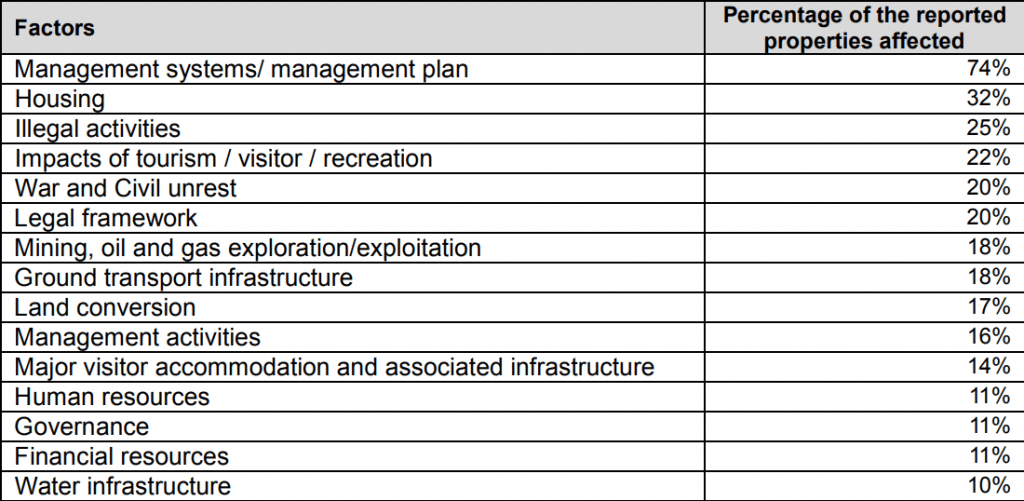Skift Take
UNESCO sites have to follow conservation and management criteria to maintain their designations, but many have slacked off over the years and put themselves at risk. Albeit, the organization doesn't view many of its most iconic sites most at risk from crowds as the most problematic.
UNESCO World Heritage Sites such as the Taj Mahal and Machu Picchu are some of the most visited tourist attractions in the world, and many of them are also some of the most mismanaged, according to a new report from the U.N. organization.
The organization released information from the state of conservation reports it had requested from 157 of the more than 1,000 UNESCO-designated sites worldwide (or nearly 15 percent of all sites).
UNESCO requires a report from a site when it’s deemed that an event or action has threatened or could threaten one of the organization’s 14 outstanding universal values, such as pollution, commercial development, or land conservation, and sites are required to submit evidence that they are working to correct any problems.
Nearly 30 percent of the reports in 2018 came from European sites. But few among those sites were ones that were confronted with overtourism as Skift has defined it.
The outstanding universal values consider factors that contribute to overtourism such as ineffective management systems and changes in local population and community. But sites that are dealing with overtourism in Europe, such as Venice, Pompeii, and Barcelona’s Park Güell, are mostly absent from UNESCO’s 2018 list of reports.
The 157 sites include Stonehenge, Grand Canyon National Park, Old City of Dubrovnik, and the Galápagos Islands, and also include 54 sites that are on the organization’s list of world heritage in danger. Sites are added to the danger list when UNESCO feels there is an imminent threat to one of its outstanding universal values.
Only three sites considered in danger are in Europe, where nearly half of all UNESCO sites are located, and most of the others are in Africa and the Middle East.
The 157 reports submitted in 2018 isn’t a record number for the agency; UNESCO requested 178 reports from sites in 2009, the highest number requested in one year.
UNESCO identified 64 challenges that sites that submitted reports are facing, including management systems and management plans which topped the list (74 percent), followed by housing (32 percent), and illegal activities (25 percent) (see chart below).
Some 22 percent of the sites said the impact of tourism is a problem that they face.

Source: UNESCO
Some sites have been on the danger list for more than 10 years, the report stated. “The tourism sector is constantly evolving,” the report said. “The development of new technologies, increasing investment in tourism infrastructure, the growth of peer-to-peer and shared usage platforms, low-cost carriers, and larger airplanes and cruise ships is resulting in the transformation of the tourism marketplace and bringing an increasing number of visitors, and therefore increased pressures and threats, to World Heritage properties. New international source markets are emerging with increasing numbers of tourists traveling internationally. Domestic tourism is also increasing in many destinations.”
The report also said proper tourism management can directly mitigate the impact of overtourism at sites. “However, local authorities often have little or no ability to control the flow of visitors coming into a destination,” the report said. “These flows and infrastructure and the ability to manage them are often within the remit of different national authorities.”
The Daily Newsletter
Our daily coverage of the global travel industry. Written by editors and analysts from across Skift’s brands.
Have a confidential tip for Skift? Get in touch
Tags: overtourism, tourism, unesco
Photo credit: UNESCO World Heritage Sites like Stonehenge in the United Kingdom, pictured here, were asked to submit a state of conservation report to UNESCO this year. Jillian Kern / Flickr
